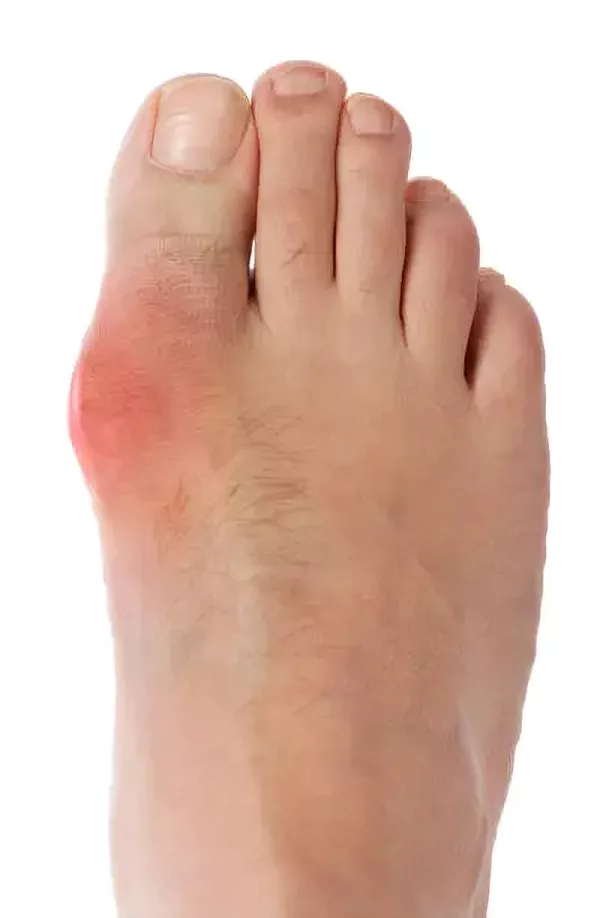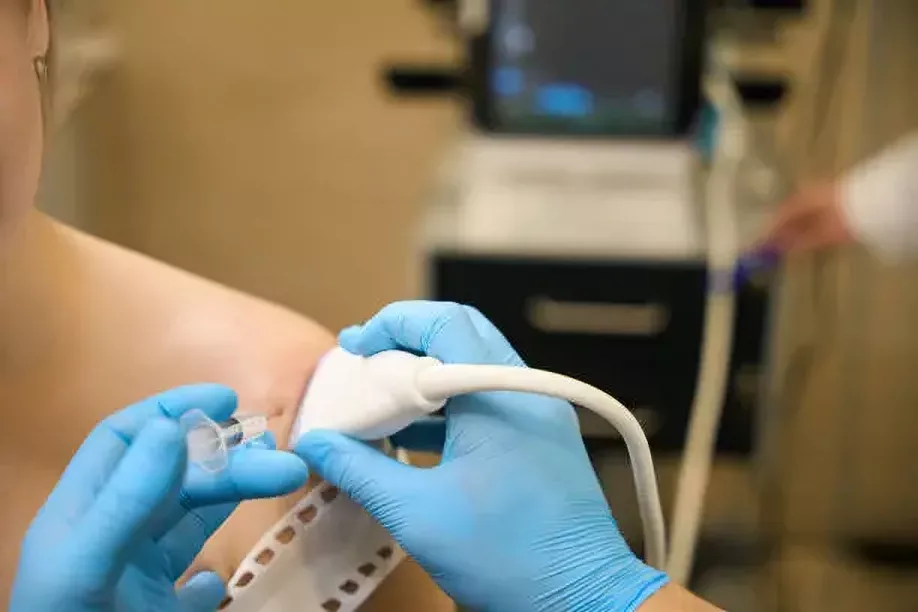Arthralgia is a medical term that refers to pain in one or more joints. The word arthralgia is derived from the Greek words arthron, meaning joint, and algos, meaning pain. Arthralgia itself is not a disease. It is a symptom that can be caused by a wide variety of underlying factors. This pain does not exist in the muscles or periarticular tissues. Sometimes, patients also feel stiffness in the joints.
Arthralgia is also commonly referred to as joint pain; however, according to research in the National Library of Medicine in the United States, the term Arthralgia cannot be used for all types of joint pain.
When no inflammatory pathologies affect the joint, we can use Arthralgia. But if inflammation is present, then we use the term arthritis.1Hardin, J. G. (1990). Arthralgia. In H. K. Walker (Eds.) et. al., Clinical Methods: The History, Physical, and Laboratory Examinations. (3rd ed.). Butterworths.
What is Polyarthralgia?
Polyarthralgia refers to a condition where the patient has stiffness and pain in multiple joints. It’s important to understand the sequence in which the joints were affected, such as which joint was affected first and how many joints are involved. Additionally, it’s crucial to know whether the joint pain is migratory (moving from one joint to another) or if it predominantly affects larger or smaller joints. The pain in multiple joints can negatively impact patients’ daily functioning.2Samanta, J., Kendall, J., & Samanta, A. (2003). Polyarthralgia. BMJ (Clinical research ed.), 326(7394), 859. https://doi.org/10.1136/bmj.326.7394.859
Associated Symptoms of Arthralgia
Pain in the joint can be present with many other associated symptoms, including stiffness of the joint, warm skin, and limited mobility. Along with these primary symptoms, patients can also experience the following symptoms:3Alexander, J. L., Dennerstein, L., Woods, N. F., Halbreich, U., Kotz, K., Richardson, G., Graziottin, A., & Sherman, J. J. (2007). Arthralgias, bodily aches and pains and somatic complaints in midlife women: etiology, pathophysiology and differential diagnosis. Expert review of neurotherapeutics, 7(11 Suppl), S15–S26. https://doi.org/10.1586/14737175.7.11s.S15
- Redness of the overlying skin
- Numbness
- Tingling or other similar sensations
- Pain with movement
Arthralgia can occur in any of the joints. However, in the case of polyarthralgia, the patient experiences pain in more than one joint. The pain can occur in any of the following joints:
- Ankle
- Hip
- Elbow
- Shoulder
- Hands
- Spin
- Wrist
- Knee
Pain can also occur in smaller joints, such as the joints of your fingers or toes.4 Stack, R. J., van Tuyl, L. H., Sloots, M., van de Stadt, L. A., Hoogland, W., Maat, B., Mallen, C. D., Tiwana, R., Raza, K., & van Schaardenburg, D. (2014). Symptom complexes in patients with seropositive arthralgia and in patients newly diagnosed with rheumatoid arthritis: a qualitative exploration of symptom development. Rheumatology (Oxford, England), 53(9), 1646–1653. https://doi.org/10.1093/rheumatology/keu159
Causes of Arthralgia
Arthralgia, or joint pain, can arise from a wide range of conditions, ranging from viral infections to injuries. The prevalence of arthralgia increases significantly after the age of 50. Some common causes of arthralgia include:
Infections:
Several viral infections can cause arthralgia. Additionally, osteomyelitis (bone infection) and septic arthritis (joint infection) can also lead to joint pain. Infections typically cause joint pain along with other symptoms such as fever, stiffness, and severe pain, especially with movement.5Suchowiecki, K., Reid, S. P., Simon, G. L., Firestein, G. S., & Chang, A. (2021). Persistent Joint Pain Following Arthropod Virus Infections. Current rheumatology reports, 23(4), 26. https://doi.org/10.1007/s11926-021-00987-y
Obesity:
Obesity or being overweight can also put strains on joints. If a person has a body mass index above 25, this can cause pain and stiffness in joints. The joints most affected in obese people are weight-bearing joints, including the ankle, knee, and hip joints.6Shumnalieva, R., Kotov, G., & Monov, S. (2023). Obesity-Related Knee Osteoarthritis-Current Concepts. Life (Basel, Switzerland), 13(8), 1650. https://doi.org/10.3390/life13081650
Injury:
Previous joint injuries can also lead to arthralgia. For example, athletes, such as tennis players, may experience joint injuries that, over time, result in joint pain or stiffness. Repetitive stress on joints or traumatic injuries can contribute to long-term arthralgia.
Metabolic diseases such as Gout:
Gout is a medical condition that involves the formation of crystals in the joint fluid. It can also cause Arthralgia. This disorder is usually present with severe pain and affects small joints. The classical presentation of gout is unbearable, sudden onset of pain in the big toe associated with inflammation.7 Parisa, N., Kamaluddin, M. T., Saleh, M. I., & Sinaga, E. (2023). The inflammation process of gout arthritis and its treatment. Journal of advanced pharmaceutical technology & research, 14(3), 166–170. https://doi.org/10.4103/japtr.japtr_144_23

Deficiency of Vitamin D:
A lack of vitamin D in the body results in decreased bone density, which can ultimately lead to conditions such as rickets in children. However, vitamin D deficiency can also cause mild to moderate joint pain. Some individuals may experience joint discomfort and choose to take vitamin D supplements when they feel pain in their joints, believing the pain is due to vitamin D deficiency.
Stress & Depression:
Some doctors also suggest that constant stress, anxiety, and depression can contribute to joint pain and lead to arthralgia.8Polinski KJ, Bemis EA, Feser M, Seifert J, Demoruelle MK, Striebich CC, Brake S, O’Dell JR, Mikuls TR, Weisman MH, Gregersen PK, Keating RM, Buckner J, Nicassio P, Holers VM, Deane KD, Norris JM. Perceived Stress and Inflammatory Arthritis: A Prospective Investigation in the Studies of the Etiologies of Rheumatoid Arthritis Cohort. Arthritis Care Res (Hoboken). 2020 Dec;72(12):1766-1771. doi: 10.1002/acr.24085. Epub 2020 Nov 6. PMID: 31600025; PMCID: PMC7145743.
Some other Causes:
- Underlying health issues, such as arthritis.
- Chronic injury
- Tendinitis
- Overuse of Joints
- Autoimmune disorders
- Hypermobility syndromes
- Allergic reactions
Pain in a single joint is present mainly in the knees and shoulders. Osteoarthritis, joint injuries, Rotator cuff syndrome, Achilles tendonitis, and frozen shoulder are some causes of single joint affliction. On the other hand, Rheumatoid arthritis, enteropathic arthropathy, ankylosing spondylitis, and reactive arthritis are the causes of multiple joint pain.
Impact of Arthralgia on Daily Life
When an individual suffers from arthralgia, it can significantly impact their daily life. Limited mobility, pain during movement, and joint stiffness can make it difficult to perform everyday activities, affecting both personal and professional lives. In some cases, people may experience muscle pain, tendonitis, or even fever, which further complicates simple tasks.
Arthralgia often affects the small joints, such as those in the hands, which can make tasks requiring fine motor skills, like writing or typing, more challenging. The constant presence of pain, especially when even minor movements exacerbate it, can lead to mental health issues such as stress, depression, and anxiety. In severe cases, individuals may need to seek support from a mental health professional to help manage the emotional and psychological effects.
Diagnosis of Arthralgia
Like any other medical examination, the management of arthralgia starts with history taking and basic physical examination. The doctor will look for pain in the joints. Doctors will also look for any inflammation, redness, warmth, or stiffness.
Once the physical examination is conducted to check the joint pain, the doctor will ask questions to note the patient’s history and symptoms. The most common questions that doctors ask during this process are:
- What started the pain, and how often do you feel the pain?
- Is pain accompanied by redness or any other symptom?
- Do you feel pain in one or more joints, and how severe is the pain?
- Do you feel that the pain started suddenly or was slow initially and worsened over time?
- Does resting, moving, and massage make the pain any better or worse?
- Is there any history of autoimmune disorder?
- Is this joint pain also present with fever?
After these basic questions, the doctor will know the patient’s intensity and location of pain. This history will help understand the exact cause so the doctor can provide the medication and suggest treatment accordingly. Furthermore, the doctor may order labs and imaging to confirm the diagnosis and understand the disease’s cause.
Some important laboratory tests are:
X-Ray:
X-ray is the first imaging modality used in patients with complaints of joint pain. It is essential to rule out osteoarthritis, joint injuries, and other causes of joint pain. In some cases, ultrasonography may also help in the diagnosis. More complicated cases may require an MRI or CT scan.9Ezzati, F., & Pezeshk, P. (2022). Radiographic Findings of Inflammatory Arthritis and Mimics in the Hands. Diagnostics (Basel, Switzerland), 12(9), 2134. https://doi.org/10.3390/diagnostics12092134
Blood Test:
A blood test is also conducted to diagnose the arthralgia. A blood test is essential because joint pain can also occur due to infectious causes. Blood tests will help to diagnose the condition that the patient is suffering from.
In some cases, additional tests may be required to diagnose the cause, such as C-reactive protein and ESR.
Serology:
Serology for autoimmune disorders is crucial in diagnosing conditions like rheumatoid arthritis and SLE. Specific antibodies, such as anti-CCP for rheumatoid arthritis and ANA for SLE may be tested to assist in diagnosis. These serological tests, along with clinical presentation, help differentiate between these conditions.10Egerer, K., Feist, E., & Burmester, G. R. (2009). The serological diagnosis of rheumatoid arthritis: antibodies to citrullinated antigens. Deutsches Arzteblatt international, 106(10), 159–163. https://doi.org/10.3238/arztebl.2009.0159
Arthrocentesis:
Arthrocentesis involves aspirating joint fluid for analysis to identify the cause of joint pain. It is especially useful in diagnosing gout and can also detect infections or other conditions like pseudogout by identifying crystals or microorganisms in the fluid.11 Tantillo, T. J., BOUDREAUX, S., & Katsigiorgis, G. (2023). Arthrocentesis. In StatPearls. StatPearls Publishing.

Difference between Arthralgia & Arthritis
Arthritis and arthralgia are not synonymous. Arthralgia is a symptom, whereas arthritis is a disease. Arthralgia refers to joint pain, while arthritis involves inflammation of the joints. Though arthralgia is often an early sign of arthritis, it can also be present in other conditions.
Arthritis refers to chronic inflammation in the joints, derived from the Greek term meaning “disease or inflammation of the joint.” There are over 100 different types of arthritis, which can result from various causes such as autoimmune diseases, infections, and trauma. The term osteoarthritis was first used by Dr. John K. Spencer in 1886 to describe joint pain linked to aging and wear and tear.
In contrast, arthralgia can be caused by conditions like fibromyalgia, synovitis, and Whipple’s disease. While arthritis includes symptoms like warmth, swelling, and redness in the joints, arthralgia only involves pain without the accompanying inflammation. Differentiating between the two requires a thorough medical history, clinical examination, laboratory tests, and imaging studies.
For arthritis treatment, various creams and ointments containing menthol or capsaicin are commonly used for pain relief. NSAIDs, paracetamol, and glucosamine supplements are often recommended for managing arthralgia. While arthritis may lead to bone thinning, weight gain, and diabetes as side effects, untreated arthralgia can potentially progress to arthritis if left unmanaged.12 Politei, J., Remondino, G., Heguilen, R., Wallace, E., Durand, C., & Schenone, A. (2016). When arthralgia is not arthritis. European journal of rheumatology, 3(4), 182–184. https://doi.org/10.5152/eurjrheum.2016.15073
Arthralgia in Pregnant Women
Pregnant women often experience joint discomfort, especially in the hands. A study of 157 pregnant women with no prior joint issues found that many reported arthralgia symptoms, particularly in the third trimester. Common symptoms include joint swelling and tenderness.
The causes of joint pain during pregnancy are multifactorial, including changes in the center of gravity, weight gain, pregnancy hormones, and postural changes. The body releases hormones during pregnancy that can affect joints, leading to instability and pain.
Weight gain increases pressure on the joints, making movement difficult, especially when pain and stiffness affect multiple joints. Furthermore, changes in posture when sitting, standing, and moving can aggravate joint discomfort. Swelling of soft tissues also increases the risk of joint pain during pregnancy. Ligament relaxation is another contributing factor to joint pain, which affects joints throughout the body. However, some areas, such as the knees, lower back, and pelvic joints, are more commonly affected.13Afshar, A., & Tabrizi, A. (2021). Pregnancy-related Hand and Wrist Problems. The archives of bone and joint surgery, 9(3), 345–349. https://doi.org/10.22038/abjs.2020.50995.2531
Treatment of Arthralgia
NSAIDs, paracetamol, glucosamine, and omega-3 fish oil supplements are frequently used to treat arthralgia. Exercise, along with rest, can also help alleviate pain. For severe cases, therapy might be necessary, and Tamoxifen may be used as an alternative treatment. Other recommendations include warm baths, massage, and stretching exercises to reduce pain. Regular exercise is particularly important to maintain joint flexibility and reduce stiffness.14Kidd, B. L., Langford, R. M., & Wodehouse, T. (2007). Arthritis and pain. Current approaches in the treatment of arthritic pain. Arthritis research & therapy, 9(3), 214. https://doi.org/10.1186/ar2147
What is Post-Viral Arthralgia?
Post-viral arthralgia refers to persistent joint and muscle pain following viral infections, such as dengue or COVID-19. Studies show that 10 to 30 percent of COVID-19 patients experience musculoskeletal symptoms, including joint pain.15Hoong, C. W. S., Amin, M. N. M. E., Tan, T. C., & Lee, J. E. (2021). Viral arthralgia a new manifestation of COVID-19 infection? A cohort study of COVID-19-associated musculoskeletal symptoms. International journal of infectious diseases : IJID : official publication of the International Society for Infectious Diseases, 104, 363–369. https://doi.org/10.1016/j.ijid.2021.01.031
Symptoms of post-viral arthralgia include severe stiffness in the morning. Patients feel difficulty moving. They mostly feel this pain in the knees, elbows, fingers, and ankles.
While most patients recover within two to three months, some experience prolonged pain even after recovering from the viral infection.
Regular, low-impact exercises are recommended to reduce joint stiffness, strengthen the joints, and minimize pain. High-impact exercises may strain the joints and worsen symptoms over time.
Conclusion
Arthralgia makes it difficult for patients to do their daily activities as they consistently feel pain in one or more joints. It also negatively impacts their lifestyle as it reduces their ability to move freely. Limited mobility and pain make it hard for people to live a healthy life every day.
Similar to other diseases, it is essential for people suffering from Arthralgia to look for proper treatment and care as soon as the disease is diagnosed. Carelessness and lack of appropriate treatment can make the pain worse and can severely impact the joints in the long term. Protecting your joints from injury and overuse is essential to reduce the risk of Arthralgia. Maintaining a healthy diet and staying active can help reduce the risk of joint pain.
Refrences
- 1Hardin, J. G. (1990). Arthralgia. In H. K. Walker (Eds.) et. al., Clinical Methods: The History, Physical, and Laboratory Examinations. (3rd ed.). Butterworths.
- 2Samanta, J., Kendall, J., & Samanta, A. (2003). Polyarthralgia. BMJ (Clinical research ed.), 326(7394), 859. https://doi.org/10.1136/bmj.326.7394.859
- 3Alexander, J. L., Dennerstein, L., Woods, N. F., Halbreich, U., Kotz, K., Richardson, G., Graziottin, A., & Sherman, J. J. (2007). Arthralgias, bodily aches and pains and somatic complaints in midlife women: etiology, pathophysiology and differential diagnosis. Expert review of neurotherapeutics, 7(11 Suppl), S15–S26. https://doi.org/10.1586/14737175.7.11s.S15
- 4Stack, R. J., van Tuyl, L. H., Sloots, M., van de Stadt, L. A., Hoogland, W., Maat, B., Mallen, C. D., Tiwana, R., Raza, K., & van Schaardenburg, D. (2014). Symptom complexes in patients with seropositive arthralgia and in patients newly diagnosed with rheumatoid arthritis: a qualitative exploration of symptom development. Rheumatology (Oxford, England), 53(9), 1646–1653. https://doi.org/10.1093/rheumatology/keu159
- 5Suchowiecki, K., Reid, S. P., Simon, G. L., Firestein, G. S., & Chang, A. (2021). Persistent Joint Pain Following Arthropod Virus Infections. Current rheumatology reports, 23(4), 26. https://doi.org/10.1007/s11926-021-00987-y
- 6Shumnalieva, R., Kotov, G., & Monov, S. (2023). Obesity-Related Knee Osteoarthritis-Current Concepts. Life (Basel, Switzerland), 13(8), 1650. https://doi.org/10.3390/life13081650
- 7Parisa, N., Kamaluddin, M. T., Saleh, M. I., & Sinaga, E. (2023). The inflammation process of gout arthritis and its treatment. Journal of advanced pharmaceutical technology & research, 14(3), 166–170. https://doi.org/10.4103/japtr.japtr_144_23
- 8Polinski KJ, Bemis EA, Feser M, Seifert J, Demoruelle MK, Striebich CC, Brake S, O’Dell JR, Mikuls TR, Weisman MH, Gregersen PK, Keating RM, Buckner J, Nicassio P, Holers VM, Deane KD, Norris JM. Perceived Stress and Inflammatory Arthritis: A Prospective Investigation in the Studies of the Etiologies of Rheumatoid Arthritis Cohort. Arthritis Care Res (Hoboken). 2020 Dec;72(12):1766-1771. doi: 10.1002/acr.24085. Epub 2020 Nov 6. PMID: 31600025; PMCID: PMC7145743.
- 9Ezzati, F., & Pezeshk, P. (2022). Radiographic Findings of Inflammatory Arthritis and Mimics in the Hands. Diagnostics (Basel, Switzerland), 12(9), 2134. https://doi.org/10.3390/diagnostics12092134
- 10Egerer, K., Feist, E., & Burmester, G. R. (2009). The serological diagnosis of rheumatoid arthritis: antibodies to citrullinated antigens. Deutsches Arzteblatt international, 106(10), 159–163. https://doi.org/10.3238/arztebl.2009.0159
- 11Tantillo, T. J., BOUDREAUX, S., & Katsigiorgis, G. (2023). Arthrocentesis. In StatPearls. StatPearls Publishing.
- 12Politei, J., Remondino, G., Heguilen, R., Wallace, E., Durand, C., & Schenone, A. (2016). When arthralgia is not arthritis. European journal of rheumatology, 3(4), 182–184. https://doi.org/10.5152/eurjrheum.2016.15073
- 13Afshar, A., & Tabrizi, A. (2021). Pregnancy-related Hand and Wrist Problems. The archives of bone and joint surgery, 9(3), 345–349. https://doi.org/10.22038/abjs.2020.50995.2531
- 14Kidd, B. L., Langford, R. M., & Wodehouse, T. (2007). Arthritis and pain. Current approaches in the treatment of arthritic pain. Arthritis research & therapy, 9(3), 214. https://doi.org/10.1186/ar2147
- 15Hoong, C. W. S., Amin, M. N. M. E., Tan, T. C., & Lee, J. E. (2021). Viral arthralgia a new manifestation of COVID-19 infection? A cohort study of COVID-19-associated musculoskeletal symptoms. International journal of infectious diseases : IJID : official publication of the International Society for Infectious Diseases, 104, 363–369. https://doi.org/10.1016/j.ijid.2021.01.031

